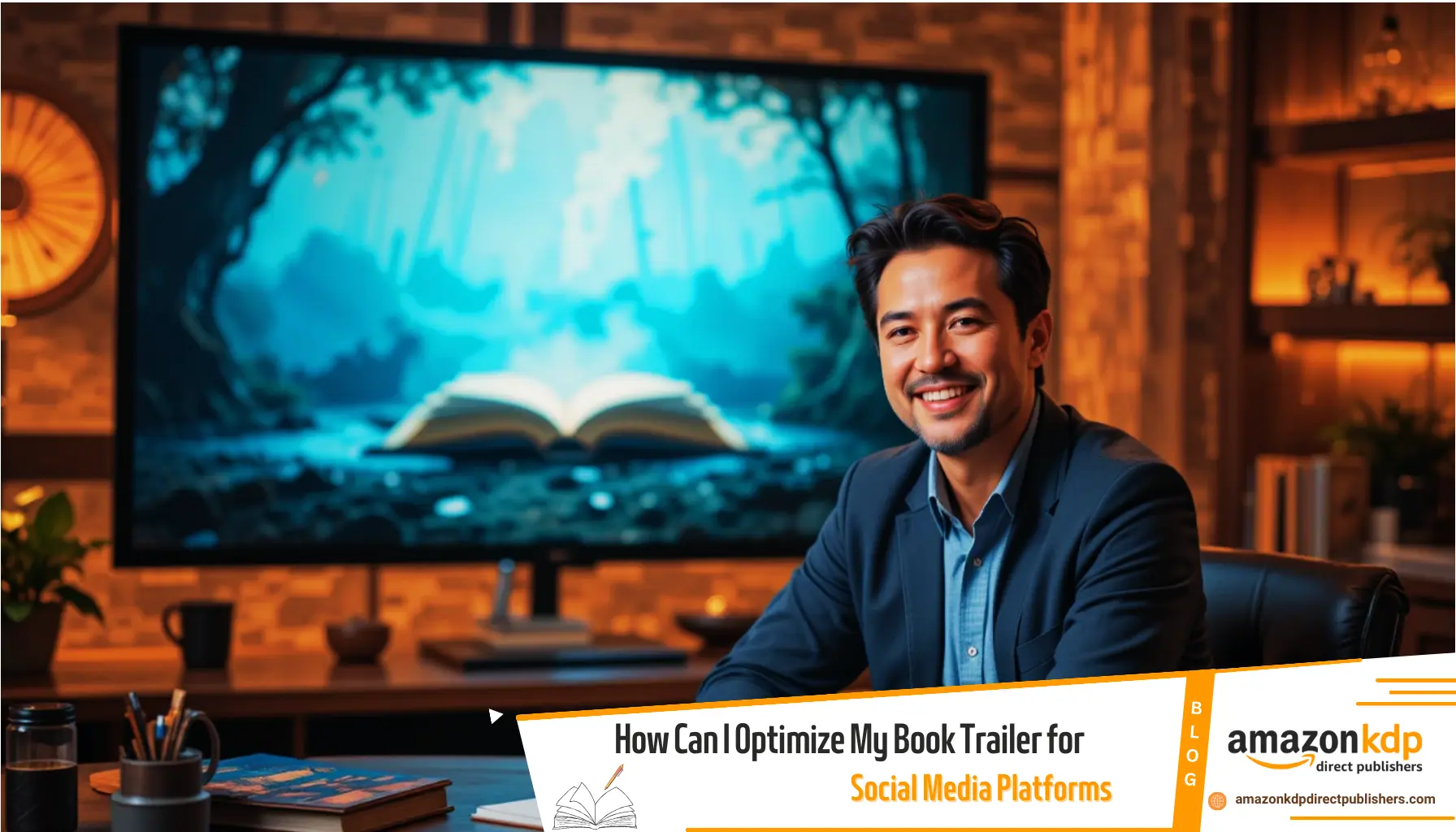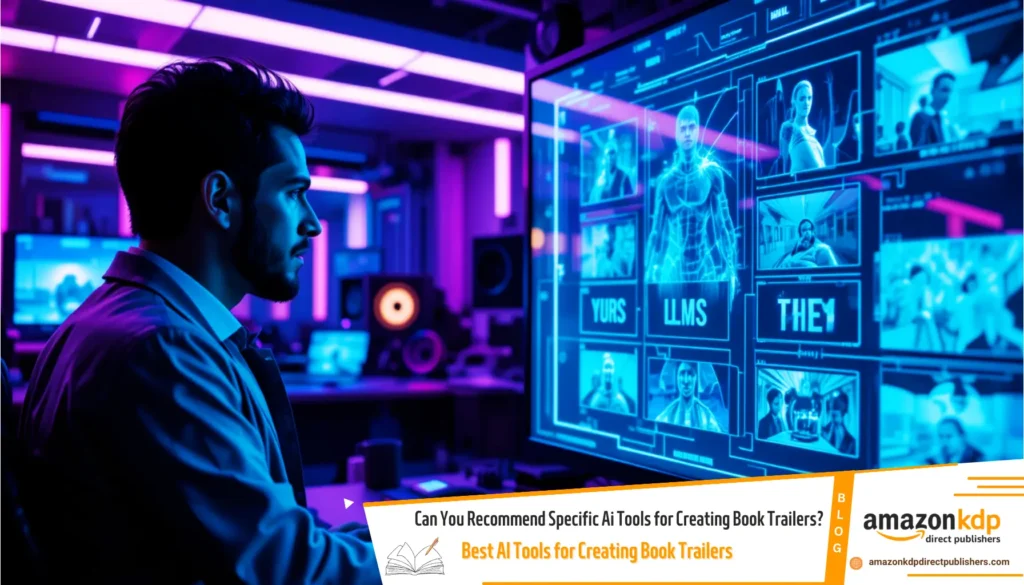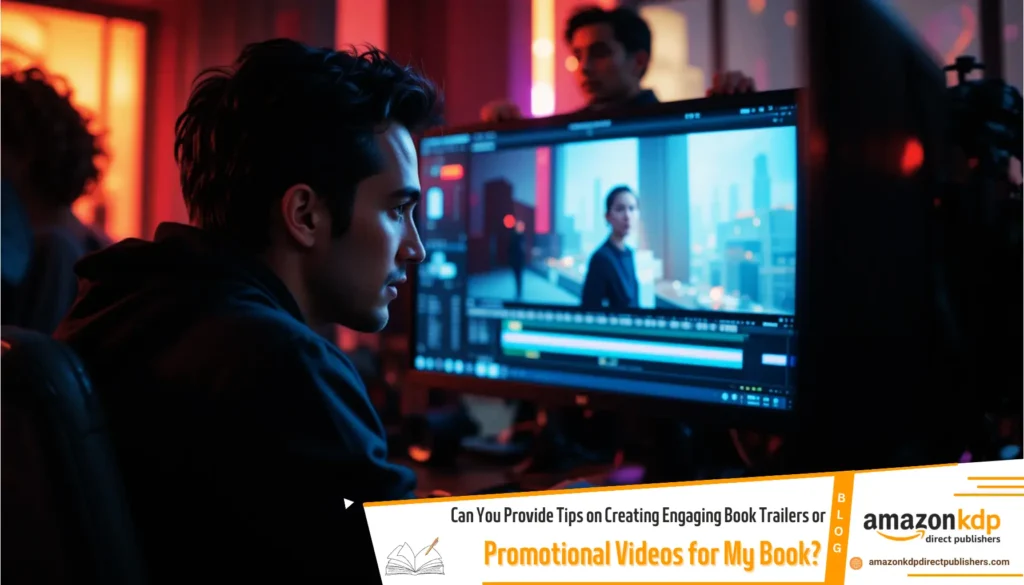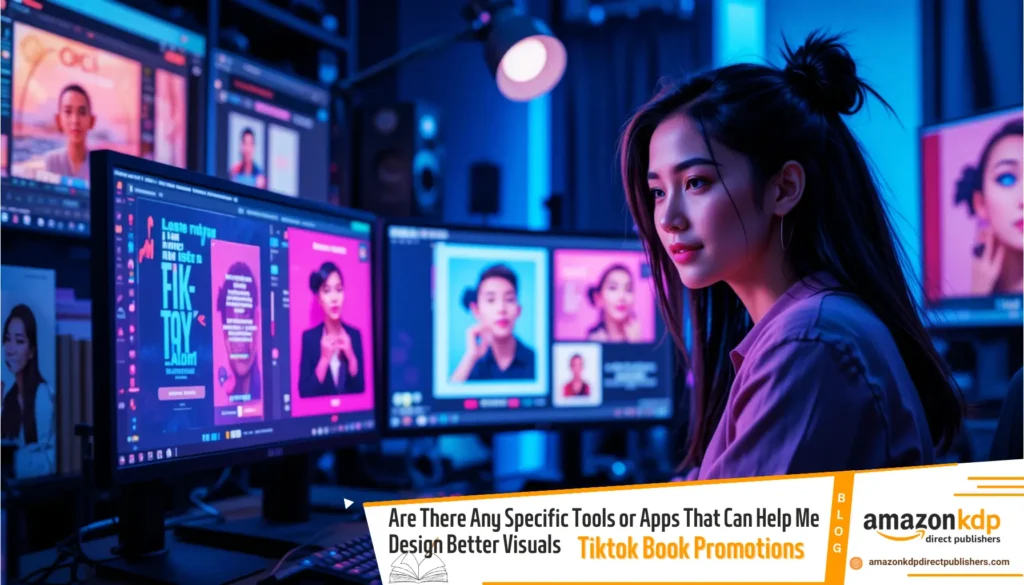Optimize Your Book Trailer: A Step-by-Step Guide
You poured your soul into writing your book, now it’s time to bring that story to life on screen. Book trailers aren’t just for big publishers anymore—they’re a must-have tool for self-published authors, indie writers, and even traditionally published authors who want to grab eyeballs on platforms like Instagram, TikTok, Facebook, and YouTube.
But here’s the catch: a great book trailer alone won’t get views or convert into sales unless it’s optimized for social media. You need the right format, the right length, and the right message to stand out in the endless scroll of content. That’s what this guide is all about—a practical, step-by-step breakdown of how to create a book trailer that performs like a pro ad.
Understanding the Role of Book Trailers in Today’s Digital Landscape
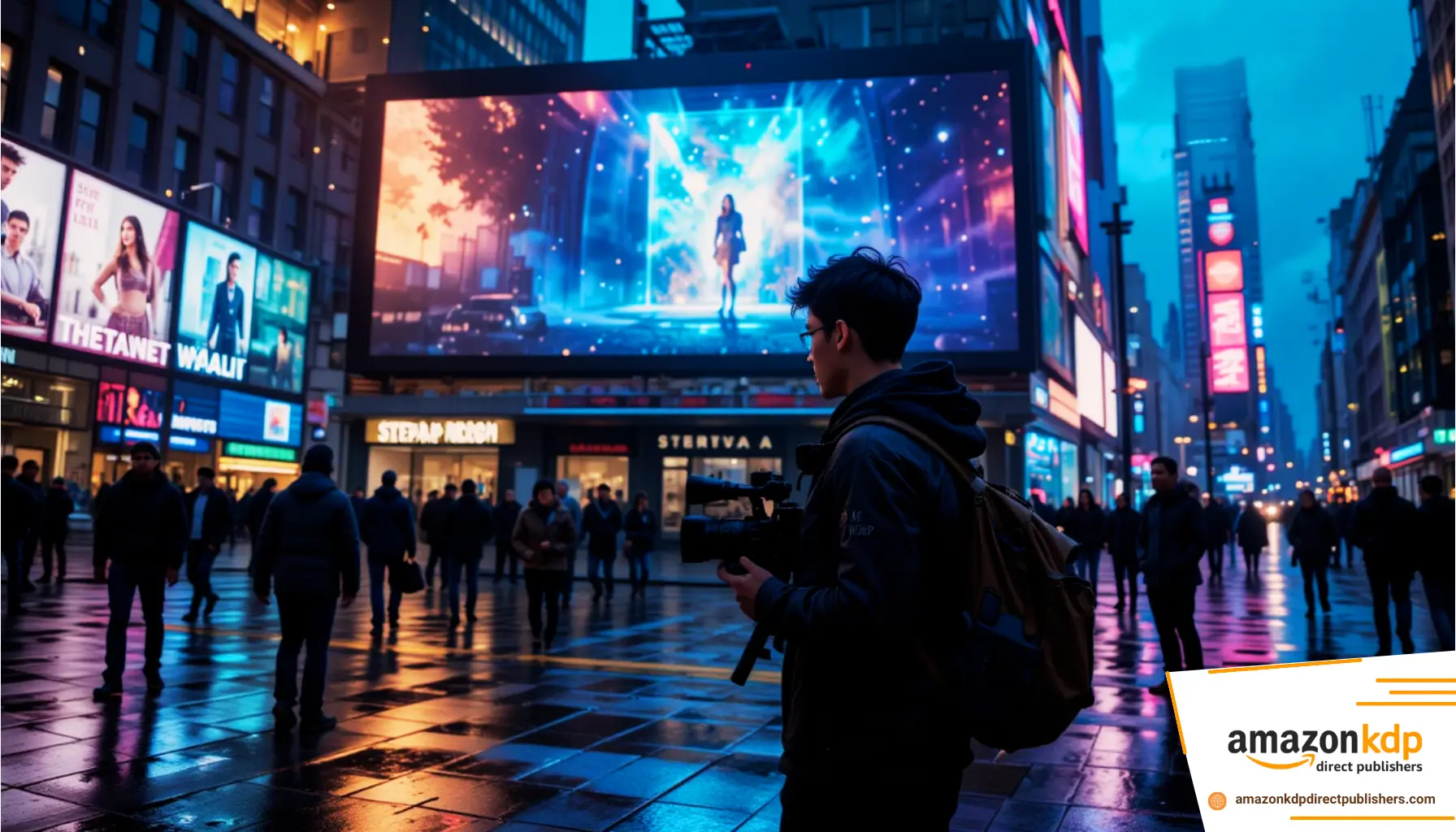
What is a Book Trailer and Why It Matters
A book trailer is essentially a mini movie about your book. Think of it as your book’s elevator pitch in video form—visually enticing, emotionally hooking, and creatively packed with storytelling potential. And while they used to be a novelty, today’s readers, especially younger audiences, expect video content.
In fact, video is now the top-performing content on most platforms. According to HubSpot, video content generates up to 1200% more shares than text and image content combined. That’s why a good book trailer can go viral, draw in new readers, and build a buzz before or after your book’s release.
But it’s not just about views. A well-crafted and platform-optimized trailer can improve conversions—turning curious scrollers into paying readers.
How Social Media Has Changed Book Promotion Forever
Let’s be real: old-school book promotion is dying. Book tours, signings, even email lists are less impactful if you’re not using social media the right way. Today, your trailer needs to be where your readers hang out, and that’s often on TikTok, Instagram Reels, YouTube Shorts, and Facebook videos.
With social platforms prioritizing short-form video content, authors now have the power to build hype, create community, and sell books faster—without spending thousands on traditional marketing. It’s a game-changer, but only if you play by the rules of each platform.
Setting the Stage: Know Your Target Audience
Who Are You Trying to Reach with Your Book Trailer?
Before hitting record, take a moment to profile your ideal reader. Are they teens who devour dark fantasy? Millennial women obsessed with romantic comedies? Business professionals looking for self-help books?
Knowing your target reader isn’t just about demographics—it’s about understanding their pain points, interests, and the type of content they engage with. This helps shape everything from your visuals to your call-to-action (CTA).
Ask yourself:
- What platforms does my audience spend time on?
- What style of video content do they engage with (funny, emotional, mysterious)?
- What tone do they resonate with—serious, quirky, dramatic?
For example, if you’re promoting a YA dystopian novel, a fast-paced, moody trailer with dramatic music might hook a TikTok audience. But if you’re launching a parenting book, a calm, informative tone works better on Facebook.
Platform-Specific Audience Behavior Insights
Each platform has its quirks, and knowing them helps tailor your trailer:
- TikTok: Fast-paced, viral, humor-friendly. Great for YA, fantasy, romance.
- Instagram: Visually polished and stylized. Works well for lifestyle-driven books (cookbooks, poetry, memoir).
- YouTube: Longer attention span. Ideal for detailed book trailers, behind-the-scenes, or author commentary.
- Facebook: Engages older audiences. Better for non-fiction, inspirational, or local interest books.
By aligning your trailer’s style with the behavior of the audience on each platform, you boost your chances of not just being seen—but being remembered.
Choosing the Right Social Media Platforms for Your Trailer
Best Platforms for Fiction vs. Non-Fiction
Here’s where strategy gets real. Fiction and non-fiction thrive on different platforms:
- Fiction (especially YA, fantasy, thriller, romance) tends to go viral on TikTok and Instagram Reels thanks to dramatic visuals, trending sounds, and strong emotional hooks.
- Non-fiction (self-help, business, parenting, cookbooks) does better on YouTube (for longer formats) and Facebook (where readers prefer thoughtful, informative content).
Genre matters too:
- Mystery/Thriller: Tease the suspense with quick cuts, eerie music.
- Romance: Lead with emotional drama or humor.
- Memoir: Speak from the heart; authenticity wins.
Pros and Cons of Each Platform
| Platform | Pros | Cons |
| TikTok | Huge organic reach, trending content, great for fiction | Short shelf life, can be unpredictable |
| Visually appealing, loyal bookish communities (#Bookstagram) | Requires high-quality visuals | |
| Older audience, good for non-fiction, strong for local buzz | Declining organic reach without ads | |
| YouTube | Great for long-form trailers, searchable | Needs SEO work, slower growth curve |
Choose 1-2 primary platforms to focus on and repurpose content smartly for the others.
Optimizing Video Length and Format for Each Platform
Ideal Length for TikTok, Instagram, Facebook, and YouTube
Let’s break down the sweet spot durations for each social channel:
- TikTok: 15–60 seconds (hook within first 3 seconds is vital)
- Instagram Reels: 15–30 seconds (loop-worthy content performs better)
- Facebook Video: 30–90 seconds (slightly more room for storytelling)
- YouTube: 60–180 seconds (perfect for full trailer experience)
Attention spans are short—aim for impact, not length. Lead with your best moment.
Choosing the Right Aspect Ratios and File Formats
- TikTok & Reels: Vertical (9:16), MP4 format
- Facebook: Square (1:1) or Vertical (4:5), MP4
- YouTube: Horizontal (16:9), MP4 or MOV
Stick to high-resolution (at least 1080p), keep text large and readable, and avoid cluttered visuals.
Crafting an Attention-Grabbing Hook Within 3 Seconds
Why the First Few Seconds Matter Most
In the world of social media, attention is currency—and you’ve got about 3 seconds to earn it. That’s it. If your book trailer doesn’t hook the viewer instantly, they’re scrolling past faster than you can say “plot twist.” That’s why your opening is the single most critical part of your video.
Why is this so important?
Because every major platform—from TikTok to Instagram Reels to Facebook—prioritizes engagement within the first few seconds. The algorithm measures how long users watch your video before deciding whether to push it to more people. If viewers bail early, your reach dies with it.
So how do you create an effective hook?
- Ask a provocative question: “What if your memories were a lie?”
- Show a dramatic or emotional scene: blood splatter on a page, a slow pan over a crying protagonist.
- Use a powerful quote from your book: one that teases mystery, romance, or danger.
- Use trending music or sound: TikTok and Instagram love this.
Your goal is to create curiosity, suspense, or emotion—something that grabs the viewer by the imagination and says, “Wait…what’s this about?”
Examples of Effective Hooks from Popular Book Trailers
Let’s take a few examples:
- Fantasy Trailer Hook: “She was born to kill the king. But what if she fell in love with him instead?”
- Romance Trailer Hook: “They made a pact to never fall in love. Then came the kiss.”
- Thriller Hook: “He confessed to a murder he didn’t commit. Or did he?”
These quick, one-liner intros build tension and curiosity—the holy grail of engagement. Use large text on-screen, match it with music, and you’re off to a winning start.
Enhancing Book Trailers with Captions and Subtitles
Accessibility and Engagement Benefits
Here’s something a lot of authors miss: most people watch videos on mute—especially on platforms like Facebook and Instagram where autoplay is the default setting. That means if your book trailer relies only on voiceover or dialogue, you’re losing most of your audience before they even get to the point.
Captions and subtitles are your secret weapon. Not only do they make your trailer accessible to viewers who are deaf or hard of hearing, but they also boost watch time and engagement.
In fact, Facebook reports that captioned videos see a 12% increase in view time. On TikTok, well-captioned videos have a much higher chance of going viral because they work even without audio.
Here’s how to do it right:
- Use bold, easy-to-read fonts (sans serif is best)
- Stick to white text with black outlines for visibility
- Don’t cram the screen—keep the text short and punchy
- Time your captions perfectly with the speech or music beat
Tools to Easily Add Subtitles to Videos
You don’t need fancy software or editing skills to do this. Here are a few free and easy tools:
- CapCut (perfect for TikTok and Reels)
- Veed.io (auto-subtitles, good for beginners)
- Descript (great for longer YouTube videos)
- YouTube Studio (has built-in subtitle editor)
If you’re uploading across multiple platforms, make sure you burn captions directly into the video so they appear automatically.
Using Hashtags and Keywords to Maximize Reach
Trending Hashtag Strategies
Hashtags are the search engine of social media—especially on TikTok and Instagram. When used strategically, they can put your book trailer in front of the right audience, even if you have zero followers.
Here’s the strategy:
- Use a mix of broad, niche, and branded hashtags.
- Broad: #BookTrailer #BookTok #NewBook
- Niche: #FantasyReads #IndieAuthor #ThrillerLovers
- Branded: #[YourBookTitle] #AuthorNameBook
Stick to 5–10 hashtags on Instagram and TikTok. Too many, and your post looks spammy. Too few, and you’re not discoverable.
Also, check which hashtags are trending in your genre using TikTok search or Instagram’s Explore tab.
Book Niche Keywords That Help You Rank
Keywords are just as important in your caption and video description as they are in the actual hashtags. Especially on YouTube, where search optimization is key.
Here are keyword tips:
- Include your book title, genre, and hook in the description.
- Add tags like “book trailer fantasy,” “romance book trailer,” “new indie author,” etc.
- Write a short but powerful caption that matches the theme of your book.
For example:
“A forbidden romance between a witch and a hunter. Watch the full trailer for Darkened Hearts, a new fantasy romance by indie author Kayla Moon. #BookTok #FantasyReads #WitchRomance”
This boosts your video’s discoverability without looking robotic.
Leveraging Social Media Algorithms to Your Advantage
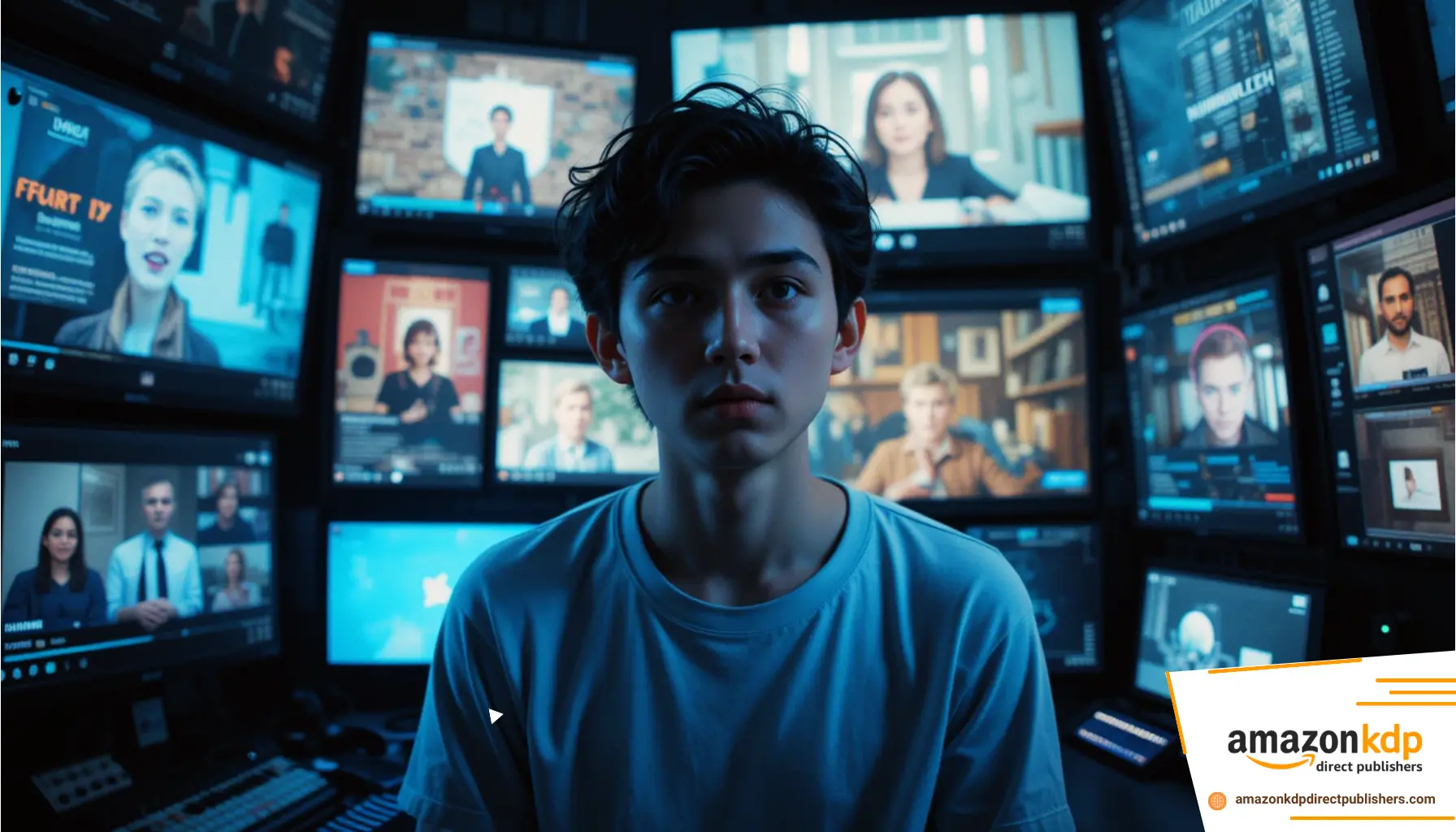
Understanding Platform Algorithms (Instagram, TikTok, YouTube)
The algorithms are different across platforms, but they all want the same thing: engaging content that keeps people on the app.
Let’s break down the algorithmic logic:
- TikTok: Pushes videos based on watch time, likes, shares, and replays. First 3 hours after posting are crucial. Use trending sounds and hashtags for better reach.
- Instagram Reels: Focuses on content that gets saves and shares. Aesthetic quality and originality matter. Use native features (like stickers, captions).
- YouTube Shorts: Prioritizes completion rate and viewer retention. Hook early, and avoid slow intros.
Consistency is also rewarded. Try posting twice a week with small trailer cuts or behind-the-scenes content.
How to Increase Engagement and Watch Time
Here’s how to get more people watching your trailer till the end:
- Keep it short (under 30 seconds for Reels/TikTok)
- Add captions/subtitles for muted viewing
- Use trending audio to tap into algorithmic boosts
- Post at peak hours (usually lunch breaks and evenings)
- End with a CTA (more on that next)
Reposting slightly different versions of your trailer every few days is also smart—it gives you multiple chances to hit the algorithm jackpot.
Creating a Strong Call-to-Action (CTA)
What Makes an Effective CTA in a Book Trailer?
A book trailer without a CTA is like a sales pitch without a “Buy Now” button. The CTA tells your viewers what to do next, and without it, even the most compelling trailer can fall flat.
But here’s the trick: the CTA should feel natural and emotionally tied to the trailer. You’re not just saying “buy my book”—you’re giving them a reason to.
Great CTAs:
- “Discover how her story ends—Available Now.”
- “Read the secrets no one was meant to find.”
- “Join the rebellion—Order your copy today.”
You can also direct viewers to:
- Pre-order links
- Newsletter sign-up pages
- Author website or blog
- Amazon or Goodreads page
Place the CTA in the last 3–5 seconds of your video, and display it visually with bold text along with voiceover or audio.
Examples of Powerful CTA Phrases
Try one of these tailored to your genre:
- Romance: “Fall in love with The Heart You Broke. Out now.”
- Thriller: “Don’t blink—Eyes in the Dark is coming.”
- Fantasy: “Magic. War. Betrayal. Pre-order Kingdom of Ashes today.”
- Self-help: “Start your transformation with Unshakable Mindset. Grab your copy.”
Combine urgency (“now,” “today,” “limited”) with emotional payoff (“fall in love,” “discover,” “uncover”).
Repurposing Your Book Trailer for Multiple Formats
Stories, Reels, Shorts, and Beyond
Think of your book trailer as a gold mine—you shouldn’t just post it once and forget about it. Smart authors repurpose their trailers across formats to reach more people and get more mileage out of their content.
Here’s how to slice and dice your trailer:
- Instagram Stories: Cut your trailer into 15-second segments. Add interactive stickers (polls, questions) to drive engagement.
- Instagram Reels: Upload the most exciting part of the trailer with trending audio. Add bold text overlays.
- YouTube Shorts: Create a vertical version with captions and quick pacing. Add a CTA in the description.
- Facebook Stories: Share behind-the-scenes clips or teaser shots from the trailer. Use tags and emojis to humanize the content.
- TikTok Remix: Use the duet or stitch feature to show reactions to your trailer (yours or others’).
Repurposing your trailer not only extends its shelf life but also increases your chance of going viral on more than one platform.
Cross-Posting Strategies for More Views
Cross-posting isn’t just about sharing the same video everywhere. It’s about tailoring the post to match the vibe and algorithm of each platform. Here’s how:
- Change captions to match the platform tone. (TikTok = playful, Instagram = polished, Facebook = personal.)
- Upload natively, don’t just link from YouTube or elsewhere. Each platform favors content uploaded directly.
- Schedule wisely. Use tools like Buffer, Later, or Meta Business Suite to time your posts for peak traffic hours.
Bonus Tip: Consider creating a 30-day trailer content plan, including sneak peeks, countdowns, and character intros. Keep your book trailer fresh and visible long after launch day.
Collaborating with Influencers and Book Bloggers
Finding and Pitching the Right Influencers
Influencers and book bloggers are the new gatekeepers—and guess what? They love visual content. If your trailer is snappy and professional, they’re more likely to feature your book.
Here’s how to find them:
- Search hashtags like #BookTok, #Bookstagram, #IndieAuthors
- Use tools like BookSirens, NetGalley, or Social Cat
- Look for micro-influencers (1k–10k followers)—they usually have more loyal followers and are more affordable to collaborate with
When reaching out, make it personal. Show that you’ve seen their content and explain why your book fits their niche.
Here’s a pitch example:
“Hey [Name], I loved your recent review of The Scarlet Flames! I just released a book trailer for my upcoming YA fantasy, and I think your followers would love it. Would you be open to sharing or giving feedback? I’d be happy to send a free copy too!”
Keep it short, polite, and to the point.
The Power of Micro-Influencers in Book Promotion
Don’t overlook small creators. Micro-influencers often have higher engagement rates because their followers trust them more. Plus, they’re more approachable and often willing to collaborate in exchange for:
- A free copy of your book
- Exclusive trailer sneak peeks
- Shoutouts or promo codes
- A small fee if they offer sponsored posts
Influencers can share your trailer in Stories, Reels, or dedicated review posts—getting it in front of readers who are already book lovers.
Engaging with Your Audience After Publishing the Trailer
Responding to Comments and Shares
Once your trailer goes live, don’t just sit back—show up in the comments. When viewers like, share, or comment, respond quickly and warmly. This boosts your post’s visibility and builds trust with your audience.
Try these engagement tactics:
- Reply to every comment with personality
- Pin a fun or emotional comment to the top
- Ask follow-up questions to spark more conversation
- Thank people who share your video with a quick message or story mention
Also, use story polls like:
- “Would you read this book based on the trailer?”
- “Which line was your favorite?”
- “Should I drop a behind-the-scenes version?”
This keeps your audience looped into the journey and turns viewers into book-buying superfans.
Encouraging User-Generated Content
Want to know the secret to explosive reach? Get your followers to make content for you. Ask your fans, ARC readers, or street team to:
- Duet or stitch your trailer on TikTok
- React to it in Reels or Shorts
- Share their book reviews with trailer clips
Create a branded hashtag (like #ReadDarkenedHearts) and promote it in your trailer caption. Offer small giveaways or shoutouts to those who participate.
The more content others create about your trailer, the more organic momentum you build—and the more legit your book looks.
Analyzing Metrics and Performance of Your Trailer
Key Metrics to Track for Each Platform
After the hype, it’s time to measure your success. Social platforms offer detailed analytics you should absolutely be tracking.
Here’s what to look for:
| Metric | Why It Matters |
| View Count | Total eyeballs—basic but useful for reach |
| Watch Time | How long people are watching—key for YouTube and TikTok |
| Engagement Rate | Comments, shares, saves—shows emotional impact |
| Click-Through Rate (CTR) | Are people clicking your bio link or CTA? |
| Follower Growth | Is the trailer helping you gain fans? |
Set realistic goals for each platform. For example:
- TikTok: Aim for 30% watch completion and 5% engagement
- YouTube: Shoot for over 50% watch time and a few comments
- Instagram: Track saves and shares more than likes
Free and Paid Tools to Use for Analytics
Most platforms have built-in tools:
- Instagram Insights (use Creator or Business account)
- TikTok Analytics (Pro Account needed)
- YouTube Studio
- Facebook Creator Studio
You can also use:
- Metricool (free and paid plans for multi-platform analytics)
- Later (great for Instagram planning + insights)
- TubeBuddy (YouTube optimization)
Use your insights to tweak future trailers: adjust your hooks, try new formats, or shift posting times.
Common Mistakes to Avoid in Book Trailer Marketing
Overproduction vs. Simplicity
Many authors think they need a Hollywood-level trailer. Not true.
In fact, overproduced trailers often feel cold and inauthentic. You don’t need drones, slow-motion pans, or expensive actors. You need clarity, emotion, and relevance.
Mistakes to avoid:
- Too much narration or text—viewers get bored
- Stock footage that doesn’t match your book’s tone
- Overly complex plots in 30 seconds
- Loud or confusing background music
Instead, go for clean, focused, and emotionally resonant. Let the story speak.
Ignoring Mobile Optimization
Over 80% of video content is viewed on phones. Yet many authors still create wide-screen trailers that don’t scale well.
Here’s how to fix that:
- Edit your trailer in vertical (9:16) format first
- Use large, bold fonts
- Test playback on different phones before posting
- Avoid small visuals or hidden text
Mobile-first isn’t optional—it’s the rule. Optimize for it, and your trailer will perform way better across all platforms.
Conclusion
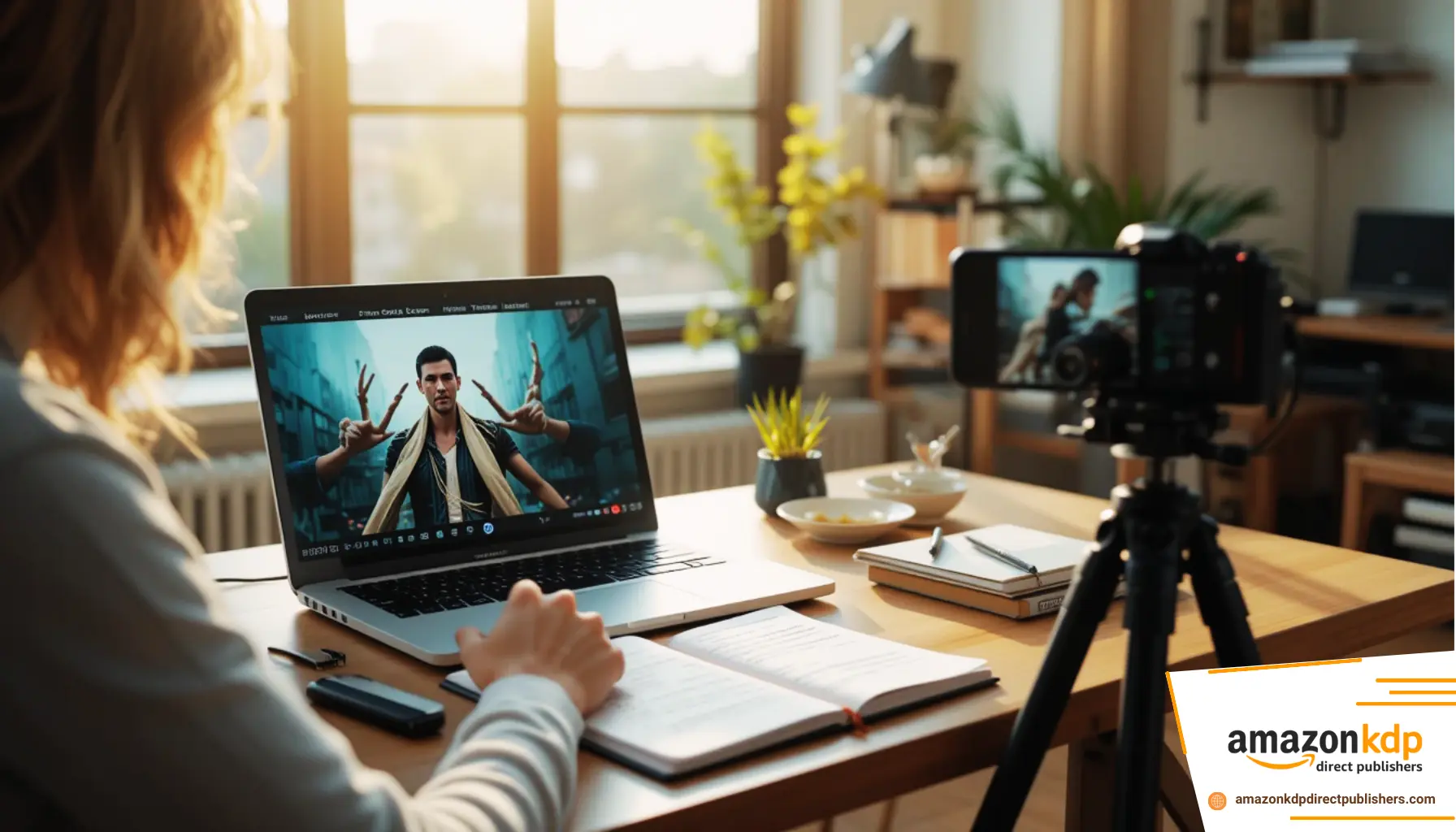
Optimizing your book trailer for social media platforms isn’t just a nice-to-have—it’s a must. In today’s fast-scrolling, content-hungry digital landscape, a powerful trailer can be the difference between your book getting buried and going viral. But success doesn’t come from just uploading a video and hoping for the best. It takes strategy, creativity, and consistency.
From crafting a scroll-stopping hook to understanding how each platform’s algorithm favors specific content, every element of your trailer needs to be intentional. Add in the value of captions, CTAs, and influencer partnerships, and you’ve built a trailer that doesn’t just get watched—it gets shared, remembered, and acted upon.
Repurpose your content, track the right metrics, and keep your finger on the pulse of your audience’s behavior. Remember, you’re not just promoting a book—you’re telling a story, sparking curiosity, and inviting readers into a world you created.
So grab your script, edit smartly, caption like a pro, and get your book trailer in front of the world. Your next loyal reader might be one swipe away.
FAQs
1. How long should my book trailer be for social media?
Aim for 15–30 seconds for platforms like TikTok, Instagram Reels, and YouTube Shorts. For YouTube or Facebook, you can extend it to 60–90 seconds, but make sure it’s engaging throughout. Always remember: shorter trailers usually perform better due to limited attention spans.
2. What’s the best time to post my book trailer on social media?
Generally, posting during lunchtime (11 am–1 pm) and evening hours (6 pm–9 pm) works best. These are the times when most users are active online. However, use insights or analytics from each platform to see when your specific audience is most engaged.
3. Can I create a book trailer myself without hiring a professional?
Absolutely! Many successful authors create compelling trailers using free or low-cost tools like Canva, CapCut, iMovie, or InShot. Focus on storytelling, music, and pacing. As long as it looks clean and gets your message across, professional production isn’t always necessary.
4. What types of content can I use to repurpose my trailer?
Repurpose your trailer into:
- Teaser clips for Stories or Shorts
- Character or quote reels
- Behind-the-scenes footage
- Reaction videos or Q&A about the trailer
- Countdown graphics leading to book release
It helps keep the momentum going and introduces your book to new audiences.
5. How do I track the success of my book trailer across platforms?
Use built-in analytics tools on TikTok, Instagram, YouTube, and Facebook. Look at metrics like watch time, engagement rate, click-throughs, and follower growth. These will show how well your trailer resonates and guide improvements for future campaigns.



